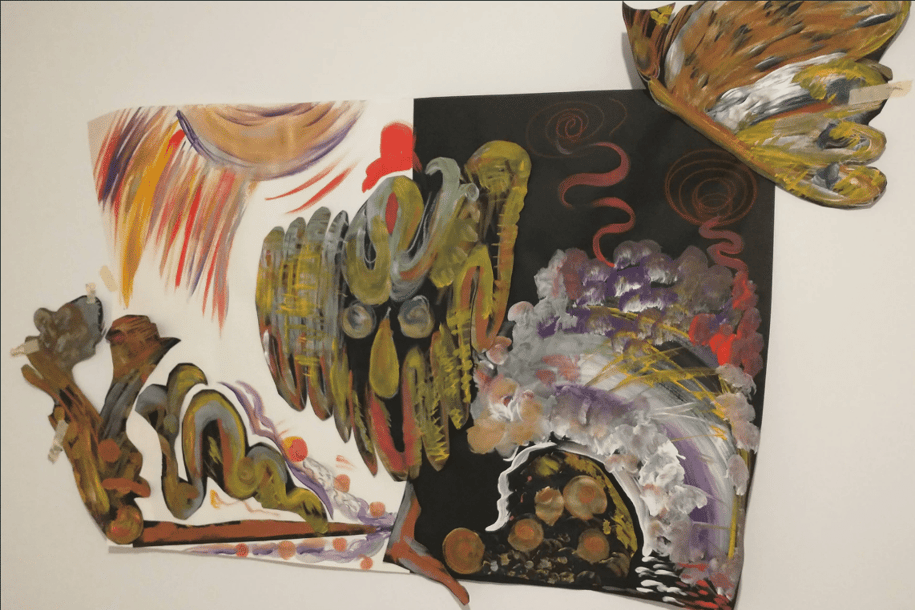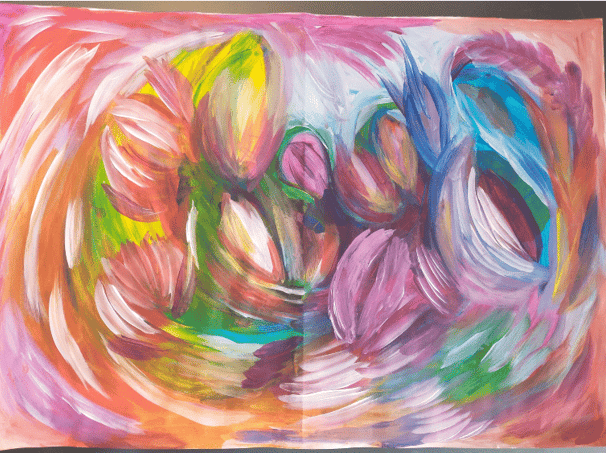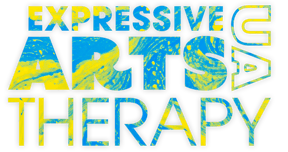Polina Yakumenko




Read more
The more we become our flow, the happier we become,
the easier it becomes for us to live everyday life and overcome adversities, the easier it becomes to succeed in what we choose to do, and the more fulfilled we become.
- Giora Carmi
How can one dive into the process of intuitive painting?
Intuition is an inner knowing, a voice that we begin to hear when we listen to it. Learning to listen to intuition is a practice, especially if we've never or rarely paid attention to it.
Rediscovering playfulness
Let me share a personal story that many can relate to: rediscovering my inner playfulness. With Expressive Arts, I rediscovered how to let go of being too serious and demanding of myself, which had prevented me from fully showing up in the world.
During the creative process, I let my inner child play freely, breaking free from the limits I put on myself. The result? I've recognised the value of doing things that 'make no sense', and 'are not helpful or necessary'.
This brought me intense joy and reminded me of my childhood need to be seen and acknowledged. By following that need to satisfy it, I became more open, found the courage to be vulnerable, and revealed parts of myself I'd kept hidden. These insights brought me closer to myself and the people around me, creating a deeper sense of connection.
Tuning into "direct experience" of the present moment
To achieve this, I find it very helpful to bring awareness to my body and start noticing my feelings. Focus on the sensation of touching the brush: What does it feel like to hold it in my hand? Pay attention to the sensation as the brush touches the paper: What does it feel like to make contact with the paper? What does the paper itself feel like? In intermodal expressive arts, we refer to this process as sensitization - tuning into our senses, including touch, sight, sound, taste, and smell.
Following our sense of beauty as a guide to art-making
Instead of planning paintings in advance, it's about listening to the impulses of the present moment and following these impulses. By constantly reconnecting with my senses and checking in with myself - how do I feel when I see this shape I've just painted? What does this shape need right now to be visually satisfying for me? - it's like engaging in a dialogue with the painting through my senses, not my thoughts.
At the start, it can be challenging to distinguish whether it's your inner critic or your intuition guiding you. However, as you practice, you'll find it easier to follow your inner sense of beauty without hesitation.
Seeing things compositionally
Fortunately, this happens naturally when we tune into the "direct experience" described in point 1.


We face the fear of the blank canvas, and hesitate to make the first stroke - what if fail?
We hear our inner critic telling us that whatever we create is not beautiful enough. In fact, it often goes so far as to literally label our painting as 'ugly'.
Our thinking mind is not ready to give up control, and it constantly bombards us with expectations that block us from being fully engaged in the process.
Fear of failure
Battling with the inner critic
Navigating Expectations
Diving into the layers of your paintings
Create your intuitive painting, for example, by depicting how you feel right now. Don't spend too much time on it - just 1 to 3 minutes.
Look at the painting and find the spot you like or dislike the most - where you feel the strongest emotion. Imagine yourself physically standing there or diving into that spot. What does it feel like?
Now, let's delve into what emerges. Take another piece of paper, and create a new painting. Don't think, just paint going with your first impulse. Again, unless the painting is asking you to, don't spend too much time on it 1- 3 min.
Find the spot that attracts you the most, or it could be the area that you prefer to avoid, and repeat this process several times until you reach the image that feels like a final image for now. It could take 3 times or even 10.
Every impulse is a new movement, a new chance, a transformation being born. Every transformation is a new piece of Art.
July 2023, written at European Graduation School. Switzerland, Saas Fee
State (how I am now) → Thoughts → Actions → Life Quality
And, as they do, they begin to shine in our everyday life.
Considering trying out Expressive Arts?
Reach out to me for one-on-one or group sessions.
The impulse is always there: the heartbeat, the breath, a sudden spark of a joy, sadness or an idea; a smell of a flower, a touch of a surface. I don't have to search for impulses. I have to learn to notice them, and have the courage to let them evolve.
Author
Polina Yakumenko


Certified Expressive Arts Facilitator from Step ahead!
Expressive Arts Institute Berlin, pursuing a master's
degree at the European Graduate School
Certified Art Therapy Practitioner from the International Training Company "Osnova" by Olena Tararina
More Articles
Read more
